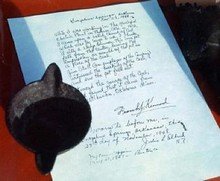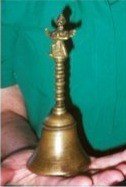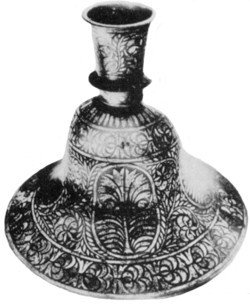Strangely, in the past we’ve had a significant numbers of people designing, building and trying to get working what have been called ‘free energy’ devices, which in that we seem to be living within a slowed down, delayed, less advanced technologies reality version this could perhaps explain (at least in some instances) why these efforts didn’t work.
On the other hand, ‘IF’ limiting technological developments was actually a ‘KEY’ predefined attribute of our universe’s single inhabited planet version such that we’d not be able to develop free energy technologies nor the technologies to develop interstellar capable craft such that we’d end up accumulating an increasingly massive population while being stuck on our one single planet, then perhaps the ‘unbelievable’ numbers of coal seams here as well as the anomalous thickness of coal seams all over the planet where actually deliberately added in here!!!
Coincidentally, despite that we seem to have vast numbers of coal seams, as well as many that are many, many feet thick (in a few cases 100’s of feet thick) which coincidentally are then considered to be exceptionally ‘odd’ because science cannot figure out how coal seams deeper than about a half inch are formed specifically because the volume of organic matter needed to degrade to form coals seams bigger than this they cannot figure out the natural process’s and or original circumstances that would ‘explain’ the formation of these.
Even more bizarre, there are entire coal strata’s equivalent to large forest areas inclusive of (in some places) entire whole fossilized/coalified tree stumps that have then ‘somehow/by some process’ seemingly been transformed from an entire wood tree stump form into an entire/complete/intact coal tree stump version, seemingly ‘magically’ because ‘again’ they cannot figure out how this could happen via ‘natural’ process’s.
Unfortunately, the anomalously thick seams and the anomalous entire large intact tree stumps turned into coal problems are a mere ‘trifle’ compared to the ‘out of place’ artifacts (OOPArts)’ that have been found within some coal seams, some of which have been extensively documented.
Iron Nails Plus a Drill Bit Found Embedded in Extracted Coal, Coal Seams & Also Rock Stones
Iron Nail in Quartz: In 1851, Hiram de Witt, of Springfield, Massachusetts, accidentally dropped a fist sized piece of gold bearing quartz that he had brought back from California. The rock broke apart in the fall, and inside it de Witt found a 2″ cut iron nail, slightly corroded. “It was entirely straight and had a perfect head,” reported The Times of London. (The Times, London, December 24, 1851)
Nail Found Embedded in Quarry Rock: A nail partially embedded in a block of stone taken from Kingoodie quarry in Scotland was described at a meeting of the British Association for the Advancement of Science in 1845, Sir David Brewster, who gave the report, said that about an inch of the nail was embedded, the rest lying along the stone and projecting into a layer of gravel, where it had rusted. The depth from which the 9″ thick block of stone bearing the nail had been removed is not on record, but the quarry was said to have been worked for about twenty years prior to the discovery. (Charles Fort, The Complete Books of Charles Fort, pg. 133)
An Iron Drill Bit Found in Coal: An “iron instrument” apparently resembling the bit of a coal drill, was found inside a lump of coal taken from an excavation in Scotland in 1852. It was at first supposed that a miner had broken his drill while working the seam and had left the piece of metal embedded there. But the surface of the coal was unbroken: it showed no signs of drilling or any present or former opening by which the drill might have passed into it’s interior. If such a thing were not quite impossible, according to every date in the geology text books, observers would have to believe that the coal would somehow have formed around the mysterious piece of metal. (Proceedings of the Society of Antiquaries of Scotland, 1:1:121, December 13, 1852
Despite that information presented by the World Coal Association, makes us aware that the processes responsible for our current coal seams began between 360 to 290 million years ago, in coal being extracted from these, many artefacts have been found both inside the mined coal itself (when handled by someone before it’s put on a fire) or they are found ‘in situ’ within coal veins within the mines by those specifically working to extract it!!!
Gold Chain & Gold Thread Found Embedded in Extracted Coal From Mined Coal Seams
Gold Chain in Coal: On June 11, 1891, an Illinois newspaper The Morrisonville Times reported a woman finding a gold chain embedded in a lump of coal that came from a South Illinois mine:
‘A curious find was brought to light by Mrs. S.W. Culp last Tuesday morning. As she was breaking a lump of coal preparatory to putting it in the scuttle, she discovered, as the lump fell apart, embedded in a circular shape a small gold chain about ten inches in length of antique and quaint workmanship.’
Mrs. Culp is said to have initially suspected that the chain must have accidentally been dropped into the coal container, but on trying to actually pick the chain up she found that parts of it were still embedded in the coal itself, hence the following from the same news article:
‘The idea of its having been recently dropped was at once made fallacious, for as the lump of coal broke, it separated almost in the middle, and the circular position of the chain placed the two ends near to each other; and as the lump separated, the middle of the chain became loosened while each end remained fastened to the coal.’
On checking, then according to Illinois State Geological Survey these coal seams formed between 260 and 320 million years ago (during the Carboniferous Period).
Gold Thread in Coal: Workmen quarrying stone near the River Tweed below Rutherford, Scotland in 1844, found a piece of gold thread embedded in the rock of the quarry eight feet below ground level. A small piece of the thread was sent to the offices of the local newspaper, the Kelso Chronicle, “for the inspection of the curious.” (The Times, London, June 22, 1844)
The Out of Place Iron Pot Found Embedded in Extracted Coal From a Mine in Oklahoma
Iron Pot in Coal: A remarkable iron pot was allegedly found inside a large piece of coal in Oklahoma back in 1912, and is now being kept at the Creation Evidence Museum at Glen Rose, Texas. On January 10, 1949, a photograph of the iron cup was sent to Frank L. Marsh of Andrews University, in Michigan, by Robert Nordling who wrote;
“I visited a friend’s museum in southern Missouri. Among his curios, he had the iron cup pictured on the enclosed snapshot.”
The iron cup had been displayed at the private museum along with the following signed affidavit made by Frank J. Kenwood in Sulphur Springs, Arkansas, on November 27, 1948:
 “While I was working in the Municipal Electric Plant in Thomas, Okla[homa], in 1912, I came upon a solid chunk of coal which was too large to use. I broke it with a sledge hammer. This iron pot fell from the center, leaving the impression or mould of the pot in the piece of coal. Jim Stall (an employee of the company) witnessed the breaking of the coal, and saw the pot fall out. I traced the source of the coal, and found that it came from the Wilburton, Oklahoma Mines.”
“While I was working in the Municipal Electric Plant in Thomas, Okla[homa], in 1912, I came upon a solid chunk of coal which was too large to use. I broke it with a sledge hammer. This iron pot fell from the center, leaving the impression or mould of the pot in the piece of coal. Jim Stall (an employee of the company) witnessed the breaking of the coal, and saw the pot fall out. I traced the source of the coal, and found that it came from the Wilburton, Oklahoma Mines.”
The actual iron pot with the affidavit image above is from Metallicman.
The Wilburton mine coal is about 312 million years old according to Robert O. Fay of the Oklahoma Geological Survey.
An Ornate Small Brass Bell With Iron Clapper Discovered in a Virginia Coal
In 1944 by Newton Richard Anderson (ten years old at the time), was tasked with stoking the furnace at his home in Buckhannon, West Virginia, went down to the basement and picked out a particularly large lump of coal which he placed onto his already loaded shovel. The large piece inevitably wobbled and fell to the ground, splitting in two as it hit the hard floor. Protruding from one of the broken halves was a slender metallic object; so setting aside the piece containing the unusual item, the curious boy threw the remainder into the furnace.
 Using a croquet mallet, Anderson bashed the bituminous coal lump (mined in Upshur County not far from his house), and extracted what appeared to be a small and ornate brass bell with an iron clapper, before cleaning it with lye and a scrubbing brush.
Using a croquet mallet, Anderson bashed the bituminous coal lump (mined in Upshur County not far from his house), and extracted what appeared to be a small and ornate brass bell with an iron clapper, before cleaning it with lye and a scrubbing brush.
When tested using neutron activation analysis (NAA), the bell was found to be an unusual mix of metals including copper, tin, iodine, zinc, and selenium, making it substantially different from any known modern alloy. Again, the coal from that particular mine is supposed to date back to around 300 million years ago.
In order to validate his account of how he found this item, Newton Anderson took a polygraph test in 2007, which he passed comfortably.
More Mystery in the Figure Atop the Bell
The figure atop the bell which Anderson discovered is strikingly similar to that of the Hindu deity Garuda, which is commonly placed on top of Ghanta bells used in Indian, Tibetan, and Nepalese worship. These bells are generally made from brass and are usually adorned with a figure.
 Figurine on the handle of the hand-bell (credit Metallicman).
Figurine on the handle of the hand-bell (credit Metallicman).
Could the anomalous artifact discovered in a lump of coal possibly reveal the presence of a Vedic influence in North America hundreds of millions of years ago? It might seem completely implausible following the rigid framework of Darwinist thought, but Vedic literature is in sync with such timescales spanning back into great antiquity.
A Very Ornate Bell Shaped Pipe or Candle Stick Holder Bell Discovered in a Virginia Coal
On June 5, 1852, another unusual report surfaced, this time appearing in the magazine Scientific American :
“A Relic of a Bygone Age – A few days ago a powerful blast was made in the rock at Meeting House Hill, in Dorchester, a few rods south of Rev. Mr. Hall’s meeting house. The blast threw out an immense mass of rock, some of the pieces weighing several tons, and scattered fragments in all directions. Among them was picked up a metallic vessel in two parts, rent asunder by the explosion. On putting the two parts together it formed a bell-shaped vessel. . . On the other side there six figures of a flower, or a bouquet, beautifully inlaid with pure silver, and around the lower part of the vessel a vine, or wreath, also inlaid with silver. . . This curious and unknown, was blown out of the solid pudding stone, fifteen feet below the surface. . . The matter is worthy of investigation, as there is no deception in the case.”
Now called the Dorchester Pot, the bell-shaped vessel, which many have described as a vase but is more likely a pipe-holder or candlestick, was 4.5 inches (11.43 cm) high with a diameter of 6.5 inches (16.51 cm) at the base and 2.5 inches (6.35 cm) at the top, with a thickness of about 0.12 inches (3 mm).
 19th-century pipe holder from India, Shivaji Maharaj Vastu Sangrahalaya ( Public Domain )
19th-century pipe holder from India, Shivaji Maharaj Vastu Sangrahalaya ( Public Domain )
Italian author Biagio Catalano pointed out that the ‘vase’ was almost identical in appearance and style to an Indian pipe-holder which is being housed at the CSMVS Museum in Mumbai, India. The similarities between the Dorchester Pot and the Indian artifact are so striking that a link between the manufacturers of both must exist somehow. Yet it would still remain somewhat mysterious to find an Eastern relic beneath the ground in America during the 19th century.
The pudding stone, now called the Roxbury Conglomerate, is of Precambrian age according to a more recent U.S. Geological Survey map of the Boston-Dorchester area, dating the stone which allegedly contained the vase-like container to 600 million years old.
Man Made Stone Block Wall Found Deep Within a Coal Mine
Strangely we’ve also quite a few examples of entire stone walls being found, once again when extracting coal i.e. within coal mines!!!!
W.W. McCormick of Albilene, Texas kept a document recording his grandfather’s account regarding a stone block wall that was exposed whilst mining for coal. The document read,
“In the year 1928, I, Atlas Almon Mathis, was working in coal mine No. 5, located two miles north of Heavener, Oklahoma. This was a shaft mine, and they told us it was two miles deep.’ It was in ‘room 24’ of this mine one evening where Mathis had blasted coal loose using explosives that he would discover physical proof of ancient civilized activity below the ground.
The next morning there were several concrete blocks laying in the room. These blocks were 12-inch cubes and were so smooth and polished on the outside that all six sides could serve as mirrors.”
Mathis added:
“As I started to timber the room up, it caved in; and I barely escaped. When I came back after the cave-in, a solid wall of these polished blocks was left exposed. About 100 to 150 yards farther down our air core, another miner struck this same wall, or one very similar.”
Mathis said the Wilburton miners also told of finding:
“a solid block of silver in the shape of a barrel… with the prints of the staves on it,” in an area of coal dating between 280 and 320 million years ago. What advance civilization built this wall?
If the coal was Carboniferous, as would be expected, this would mean that the wall dates back to at least 286 million years.
Large Man Made Smooth Slate Wall Covered in Hieroglyphics Found Within a Coal Mine
Another wall-in-coal-mine story was reported by author and astronomer M.K. Jessup.
“It is . . . reported that James Parsons, and his two sons, exhumed a slate wall in a coal mine at Hammondville, Ohio, in 1868. It was a large, smooth wall, disclosed when a great mass of coal fell away from it, and on its surface, carved in bold relief, were several lines of hieroglyphics.”
For the above, I’ve basically done searches for and I’ve presented examples of as many different types of artefacts that have mostly been found specifically in coal mines, either in the coal itself or in the strata the coal is within or next too.
However, if the original entire multiverse scale environment was actually host to a number of disc worlds, which as we have already established via Terry Pratchet’s pre disc world ‘Strata’ book would have necessitated the acquisition of ‘extreme’ knowledge with respect to understanding the make up of the strata of likely many different worlds as well as the technical skills to define and generate ‘ancient’ bedrock strata as part of the efforts to design and build ‘realistic’ replicas of different planetary environments worlds inclusive of that worlds base strata/bedrock make up too.
So, if as I’ve postulated on earlier pages the original surface features of ‘inhabited’ planets and or various designed/terra formed disc worlds where then actually deep scanned/mapped, very, very likely by technologies able to scan to great depths such that all surface areas, all landscape features inclusive of underlying bedrock/geology could be accurately ‘replicated’ and hence then used to make up the surface of the earth’s stitched together patchwork quilt like surface landscape.
As coal seams bigger than about half inch are considered anomalous AND we’ve also apparently entire coal seams presenting entire forests of petrified coal like tree stumps all of which are then somewhat way, way bigger than the HALF AN INCH THICK that science would expect, all somewhat suggesting to me that if you have scanned all of the generally populated surface areas of planets and also disc worlds ‘AND’ you are from a galactic scale highly technically competent population that actually has the expertise to pre-define and lay down planetary strata then you might (in designing the earth) use these scans to ‘reconstruct/duplicate’ the upper surface areas inclusive of all surface vegetation including trees and even forests, which coincidentally might then include items lost by people while out walking (including carrying lamps if they’re out in the dark) and or which might then include items such as stone boundary walls and or the odd nail used in building a wooden fence (or when putting up ‘stay out’ signs etc) although such places are also likely to have access tracks maybe big enough for wooden carts, which at some point might break and or lose a wheel, particularly in mud and or maybe when crossing a wet or flooded sandy area such that a broken wheel gets left in the mud or sand and or while being robbed you lose your gold chain (or part of it) such that when the surface vegetation areas are ‘transformed’ into some sub strata coal seam here it could then very easily end up containing all of the commonly found oopart items!!!!
So, I’ve so far, presented some already quarried town/city quarry copied and pasted and filled in/reverted to the original upper ‘rock’ state now hiding quarry paraphernalia at the bottom anomalies and now I’ve also presented a lot of very different anomalous artefacts found in coal seams and coal mines.
However, another digging a hole into the earth possibilities that will result (at least at times) in of a hole being dug in exactly the same place as the original hole will happen when people are digging a well because in some specific instances you will absolutely dig/drill the well in exactly the same place to actually find water.
What Specific Item Would You Expect to Find Dropped Into a Family Well!!!!!
So, if some (to be copied and pasted) land already had a pre-drilled well which over time had also then accumulated some paraphernalia (at the very bottom) because specific items were inadvertently dropped into the well within the original multiverse location such that after the copy and paste of the land area during which the well hole is then filled in with the same extracted rock material i.e. the original specific types of soil gravel maybe some rock strata etc.
However same as for the already been quarried quarry artefacts, you’d expect at least some copied and pasted and then filled in drilled well’s to also have some dropped items sitting at the very bottom too.
In which case can you think of any ‘SPECIFIC’ item that you’d expect to find specifically at the bottom of a ‘family homestead’ well, but not at the bottom of a quarry nor embedded within a coal mine seam?
Click the right >> link below for the next page in this series . .
July 21, 2020 @ 4:53 pm
New and very long/detailed fake reality evidence post, although I’m also in worst physical shit effects ever, sort of having a rest between writing!!!
May 3, 2021 @ 2:39 pm
I was thinking about other anomalies and find that in terms of interfacing into a human form, people that were interfaced to amphibious creatures or crustaceans would have anomalous skin conditions such as Hyperhidrosis which is excessive sweating. This apparently affects 2.8% of the population and is similar to the adaptation of amphibians’ moist skin or the need for crabs to keep their gills moist to breathe on land.